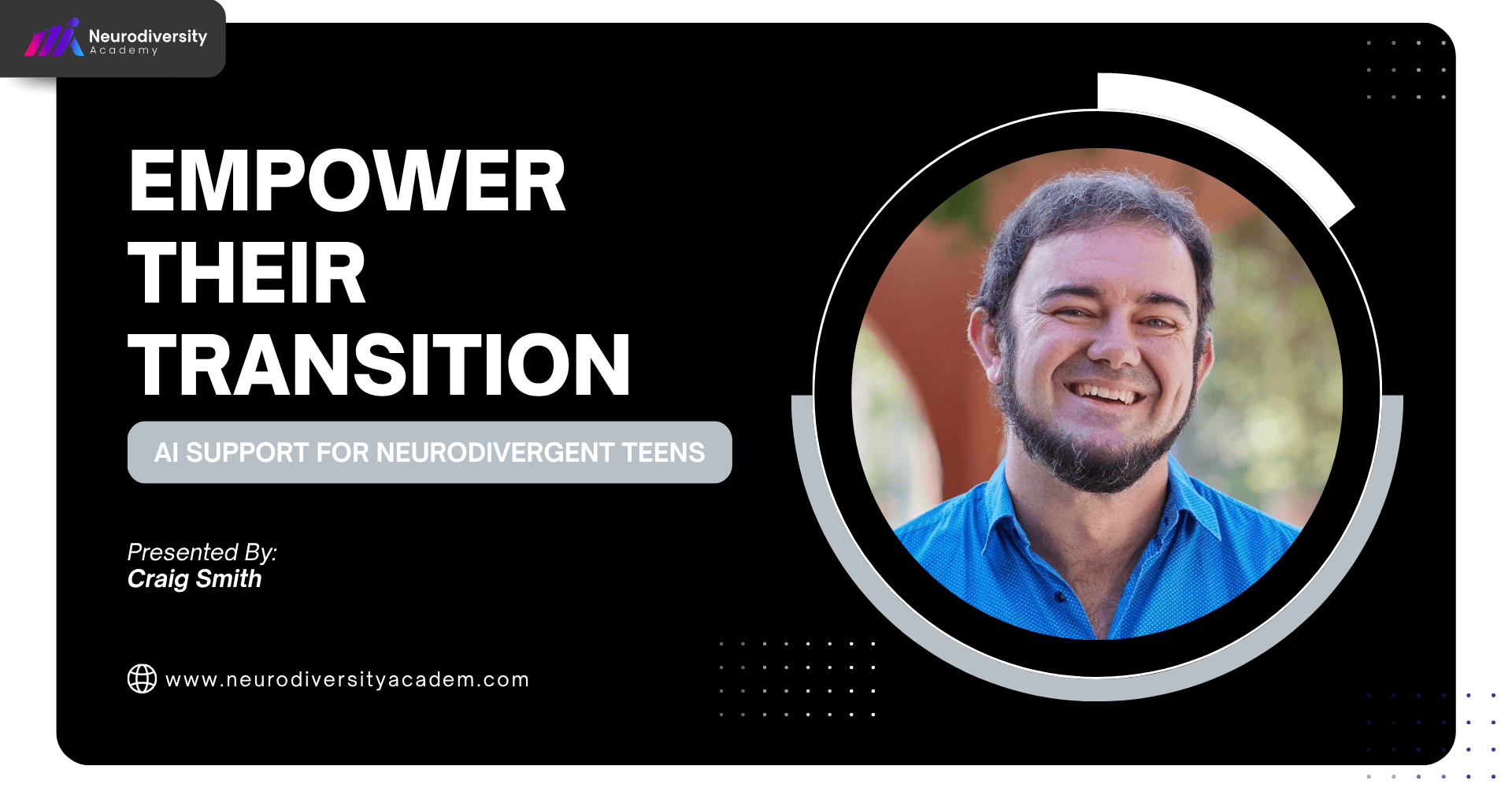Teaching Neurodivergent University Students: A Flexible and Inclusive Approach
As higher education evolves to meet the needs of a more diverse student body, one group is increasingly stepping into the spotlight: neurodivergent students. These are learners who may be autistic, have ADHD, dyslexia, dyspraxia, Tourette syndrome, or other cognitive differences. Neurodivergence isn't a deficit — it’s a variation in how brains function and process information. Yet, many university systems remain built around neurotypical norms.
This article explores how lecturers, tutors, and university staff can create more flexible, accessible, and inclusive learning environments that support neurodivergent students to thrive—not just survive.
Understanding the Neurodivergent Student Experience
Neurodivergent students often face challenges that are invisible to others: sensory sensitivities in lecture halls, difficulties with executive functioning, or anxiety around social interaction and group work. They may also face stigma or past educational trauma, especially if their needs were un-met or misunderstood in high school.
At the same time, these students bring unique strengths: attention to detail, deep interest in specific topics, creative problem-solving, and lateral thinking. Acknowledging both their needs and their abilities is key to inclusive education.
The Power of Universal Design for Learning (UDL)
Universal Design for Learning (UDL) is a framework that anticipates the variability of learners and designs curriculum, assessment, and environments from the outset to be accessible to all. Instead of retrofitting adjustments, UDL asks: how can we build flexibility into learning for everyone?
UDL strategies in higher education may include:
- Creating safe learning environments through setting clear and accepted norms.
- Providing multiple means of engagement (e.g., flexible attendance policies, varied participation methods).
- Offering multiple means of representation (e.g., video lectures, transcripts, visual aids).
- Allowing multiple means of expression (e.g., presentations, essays, media projects).
- Rewarding participation (e.g. graded responses varying from basic to insightful answers).
- Educator-student check-ins and feedback.
- Creating opportunities to build communities and a sense of belonging through communications platforms.
UDL doesn’t just benefit neurodivergent students—it makes learning better for everyone.
Structuring Flexible Learning Environments
Lecturers can make small but impactful changes to create more inclusive classes:
- Begin each session with an outline or visual agenda.
- Clearly state learning outcomes and expectations.
- Create opportunities for multi-modal questions (written or verbal), both formally (educator instigated) and informally (student instigated).
- Use accessible fonts and colour-contrast slides.
- Offer downloadable materials before class.
- Model exemplar best practice solutions through student-led responses in real time, iteratively improving subject matter knowledge through educator insights.
- Record lectures, provide summaries or solutions for review.
Flexibility doesn’t mean lowering standards. It means creating options that allow more students to meet those standards in ways that align with their learning styles.
Rethinking Participation
Many neurodivergent students struggle with traditional models of classroom participation. Speaking out in large groups, responding quickly, or engaging in spontaneous debate may not be inclusive of all learners.
Instead, offer varied ways to participate:
- Online discussion boards or polls.
- Group chats or collaborative docs.
- Small-group discussions or breakout rooms.
- Reflective journals or written feedback.
It really comes down to flexibility and choice of communications and participation. By broadening what “engagement” looks like, educators may give students multiple ways to show their understanding and build confidence.
Supporting Executive Functioning
University demands a high level of organisation, time management, and task planning—all areas where neurodivergent students may need support.
Strategies for supporting executive functioning include:
- Breaking assignments into stages with checkpoints – progressive assessments give student’s opportunities to gain a deeper understanding of the subject scenario with respect changing subject matter. This reduces the level of variation.
- Choose a time, such as the beginning or end of class, to have student best practice sessions to discuss methods of improving study outcomes. For example; how using visual timelines or planners can help achieve better time management and academic outcomes.
- Unmasking mental health and well-being problems, providing clarity over the signs that can indicate support is needed and where to find it.
- Offering assignment templates or checklists and clear rules over what are acceptable actions and what are not. A simple set of multiple-choice questions can help here, which must be completed prior to accessing the assessment resources.
- Providing learning subject matter broken into a series of organized tabulated content. Long passages of information can be daunting to neurodivergent learners, breaking this down may make it more manageable.
- Encouraging peer accountability or study groups, even providing advice or assistance in setting these up.
Where possible, include time during class to begin projects, so students can clarify expectations and ask questions.
Building Safe Spaces for Disclosure
Some students choose to disclose a diagnosis or learning difference to their educators. Others do not, often due to fear of stigma, past negative experiences, or lack of clarity on how their information will be used.
Educators can support disclosure by:
- Including inclusive statements in course outlines and introductory lectures or tutorials.
- Explaining the role of accessibility services and how to access them.
- Reassuring students that adjustments are common and welcomed.
- Offering private check-ins or optional feedback forms.
Whether a student discloses or not, it’s best practice to assume variability in your class and teach accordingly.
Collaborating with Accessibility Services
Universities typically have disability support teams that help coordinate learning plans for students with diverse needs. Academic staff can support this work by:
- Responding promptly to accommodations.
- Implementing recommendations without drawing attention to the student.
- Asking for clarification if unsure about a strategy.
- Advocating for systemic improvements within faculties.
Working together, educators and support staff can ensure neurodivergent students receive consistent, respectful, and timely support.
Inclusive Assessment Practices
Standardised exams and rigid essay formats can disadvantage students who think and communicate differently. Inclusive assessment includes:
- Providing alternative formats for assignments and exams.
- Offering extensions without penalties when needed.
- Sharing clear marking rubrics and assessment criteria upfront.
- Making assessment outlines and resources more accessible – providing summarised information in subject outlines with links to online content; particularly in cases of content heavy subjects.
- Avoid lengthy passages or statements and complex wording.
- Use diagrams and tables where possible.
- Allowing creative or multimodal responses (e.g., video, podcast, portfolio).
Encouraging students to demonstrate knowledge in ways that play to their strengths can reveal deeper learning and insight.
Addressing Sensory and Social Challenges
University environments can be overstimulating. Noisy labs, crowded lecture halls, and harsh lighting can create barriers for neurodivergent students. Strategies for improving sensory inclusion include:
- Offering lecture replays for students who need breaks.
- Reserving quiet spaces or alternative exam rooms.
- Letting students choose where to sit or work.
- Using softer lighting or digital formats.
- Providing student mentors as additional options for troubleshooting issues. This is a program related option as leadership positions must be trained in steps to resolving or referring students.
Social dynamics can also pose challenges. Group work should be structured and guided with clear roles, timelines, and communication expectations. Insights into group mechanics can also provide opportunities for student-led role selection and defining each participants’ required contributions and objectives. This provides clarity for neurodivergent learners, thus reducing or avoiding anxiety.
Educator Self-Reflection and Growth
Being an inclusive educator means being open to reflection. Ask yourself:
- Who participates most in my class? Who is silent?
- Are my materials accessible and varied? Should I be accessing in-house educational design services?
- Have I assumed neurotypical behaviours as the “norm”?
- How do I respond to unexpected behaviours or requests?
Continual learning and openness to feedback build more inclusive classrooms over time.
Highlighting Neurodivergent Role Models
Representation matters. Where possible, include neurodivergent voices in readings, guest lectures, or case studies. Celebrate the achievements of scientists, artists, entrepreneurs, and thinkers who are neurodivergent.
This helps students feel seen and valued—not just supported.
Conclusion: Inclusion is Innovation
Teaching neurodivergent university students isn’t just an act of accommodation—it’s an opportunity to innovate. Inclusive classrooms prepare all students for diverse workplaces, communities, and collaborations.
By embracing flexibility, empathy, and evidence-based strategies, educators can build learning spaces that honour the full spectrum of human cognition.
Neurodivergent students belong in our lecture halls, labs, and leadership programs. Let’s make sure our systems are ready for them—not the other way around.
Author Acknowledgement: Based on the original work by Leanne Gaul





